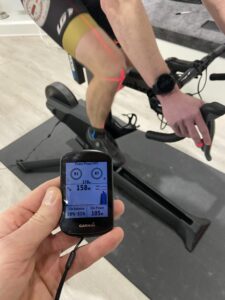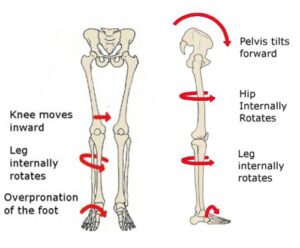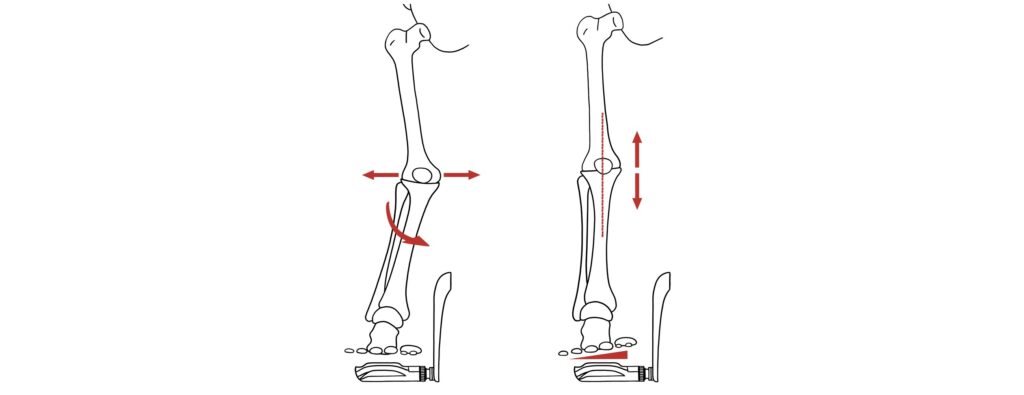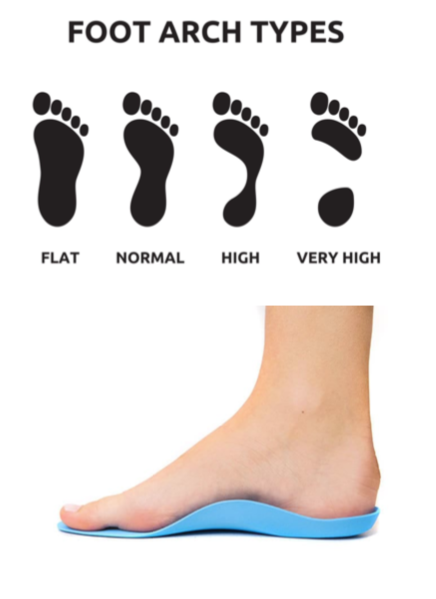Custom Cycling Insoles Toronto By Dr Alex
If you are looking for where to find the best cycling insoles in Toronto I am going to review their importance, how they can benefit the causal and competitive cyclist alike, why they are superior to non-custom orthotics like the G8 or Superfeet and our process for fitting them!

Most people don’t know that your position on the bike and how you interact with the bars and the saddle is dictated by positioning on the pedals. Altering the cleat position, using custom orthotics and/or using wedging in or beneath the shoes can dramatically alter your comfort, performance and position on the bike. These modifications are not just for knees and feet.
Every cyclist should know that an outstanding bike fit is nearly impossible without a thorough analysis of the biomechanics and positioning of the foot and cleats. If you are looking for custom cycling insoles Toronto please ensure that you see a healthcare provider with a speciality in bike fitting. The assessment of the foot and lower limb is technically challenging and should not be left to someone without a medical background. Finding the best cycling orthotics in Toronto requires an expert.
Custom Cycling Insoles Toronto: The Benefits We Provide And What The Research Tells Us
We use custom cycling insoles in Toronto whenever possible in our bike fitting services. They result in the most individually tailored fit, helping us to match our patient’s individual anatomical and performance characteristics to their equipment. The result is a perfect integration of rider and machine that leads to better comfort, performance, injury resistance and occasionally power!
[With this athlete we created Custom Insoles to correct the valgus moment/medial knee collapse on the left that resulted from forefoot varus (outward tilting of the front of foot) combined with a collapsing arch that was not remedied by altering cleat or saddle position]
My goal with any fit is to optimize how much fun an athlete has. Better comfort, injury resilience, power transfer and performance are all things that make cycling more fun and there is documentation in the literature that custom insoles can help achieve this. When we do a fit for custom cycling insoles in Toronto at our fit studio we help our athletes achieve their goals.
Injury Prevention Through Custom Cycling Orthotics
Enhanced Biomechanical Alignment = Less Knee Strain
In a study by Smith et al. (2018), published in the Journal of Sports Biomechanics (1), it was found that custom cycling orthotics significantly improved lower limb alignment during cycling. Proper alignment is crucial in preventing overuse injuries and reducing the strain on muscles and joints.

Custom orthotics, tailored to an individual’s unique foot structure, provide targeted support to correct irregularities in biomechanical alignment. O’Neil et al. found orthoses produced a trend towards increased knee distance from the bicycle centerline and reduced tibial internal rotation and that custom orthotics can be used to alter knee position in the frontal plane. This explains how we use better arch support and wedging to improve the alignment of the knee over the pedal and reduce strain on the knee tissues (2).
Mitigating Overuse Injuries
A professional cyclist will flex and extend their knee up to 5 million times in a season if they are riding 20k-30k km a year. According to a meta-analysis by Brown et al. (2019) in the Journal of Sports Medicine and Physical Fitness (3), the use of custom orthotics was associated with a reduced incidence of overuse injuries. This effect was attributed to the ability of custom orthotics to address specific issues such as excessive pronation or supination, thus minimizing the risk of conditions like iliotibial band syndrome, knee pain and shin splints.

If your bike fitter uses wedges to properly align the knee that can be very helpful for some patients. This can help to improve the Quad ratio between the inner vastus medialis and the outer vastus lateralis. Gregerson (4) found in a study that this reduces knee moments (torque) and may have implications for knee pain sufferers
Of course, there is a caveat to these points; if someone has amazing custom orthotics but they are matched to a poor fit, it doesn’t matter whether you have orthotics or not. I would recommend a mediocre fit over orthotics then great orthotics and a bad fit!
That is why I always fit someone for orthotics on the bike and retest them to ensure a proper match between fit and orthotics!
Comfort Enhancement Through Custom Cycling Orthotics
Alleviation of Foot Discomfort
Cyclists often experience foot discomfort due to pressure points, hotspots, or improper shoe fit. A study by Walker and Smith (2020) in the Journal of Foot and Ankle Research (5) emphasized the positive impact of custom orthotics in relieving foot discomfort associated with cycling. These orthotics provide personalized support, redistributing pressure evenly across the foot and addressing issues that might arise from ill-fitting shoes.

This is where custom orthotics that are well-made have a HUGE advantage over non-custom orthotics like Superfeet or G8 non-custom products. Custom orthotics are just that – custom!
They can be made to match the exact contour of the foot. Additionally, extra components like metatarsal pads or built-in wedges/support structures can added to the custom mould to account for twisting in the heel or forefoot that we call a varus or valgus deformity.
While a non-custom orthotic will provide some increased proprioceptive feedback to the brain about what is happening in the shoe, they are not resistant enough to provide any actual support to the foot or its arches and tend to collapse under strain far less than delivered through the pedal stroke!
Of course, if someone’s shoes are too small then this can make the use of an orthotic either inconsequential or outright impossible if they do not fit. I always buy my cycling shoes 1/2 size bigger than what I measure with a Brannock Device to account for foot swelling in the summer and to fit in my orthotics
Enhanced Shock Absorption
Discomfort during cycling is not limited to the feet; the entire musculoskeletal system can be affected. Research by Jones et al. (2017) published in the Journal of Biomechanics (6) demonstrated that custom orthotics contribute to enhanced shock absorption during cycling. This can alleviate discomfort in the knees, hips, and lower back, providing a smoother and more comfortable riding experience.
This point is more pertinent for gravel and MTB riders but applies to road cyclists too, especially those wearing very stiff carbon soled soles. The custom moulded orthotic should fit more evenly with the foot to provide greater force distribution on the foot itself and alleviate hot-sports as mentioned above.
Performance Optimization Through Custom Cycling Orthotics
There is not a lot of research linking custom-cycling orthotics to improved performance in a laboratory setting. I have presented some of the available research below but I would make this point: if you are hurt and can’t train or train as hard as you want to then your performance is going to be terrible. Comfort is fast! I encourage my athletes to do as much as they can with their fit on the bike and fitness off the bike so that they can stay consistent with their training – that is ultimately the fastest and most fun solution!
Improved Power Transfer
Cycling efficiency is closely tied to how effectively power is transferred from the cyclist to the pedals. A study by Martinez et al. (2016) in the Journal of Applied Biomechanics (7) revealed that cyclists using custom orthotics experienced improved force distribution during pedalling, leading to enhanced power transfer. The personalized fit of custom orthotics ensures optimal contact with the pedal, minimizing energy loss and maximizing the efficiency of each pedal stroke. I imagine that the muscular force required to support a repeatedly collapsing foot not held up by an orthotic could be a reason why orthotics help to relieve foot pain.
Are Custom Orthotics Better Than Non-Custom Insoles for Cycling?
Yes.
Custom insoles are better than non-custom orthotics for cycling. Can I show you a study that proves my expert opinion, no, but that is because no one has studied it in cycling. The only way in which custom orthotics are not better is the price. In this case, I would argue that the durability improved comfort and performance of custom insoles will pay for themselves in the long run.
Here are a couple of things to consider when you are making your choice:
HIGH ARCH HEIGHT
The purpose of an orthotic goes beyond the mechanical support of the foot and “holding it up”. Orthotics largely work by creating better proprioceptive feedback to the brain through mechanical stimulation of the foot’s proprioceptors on the bottom of the foot. An unsupported high arch will have less contact with the surface of the shoe and will provide poorer proprioception to the brain, resulting in inferior control of the ankle, knee and hip (8)
Non-custom and or orthotics usually do not provide even contact with the sole of a high-arched foot and could affect the coordination of the lower limb when pedalling.
PRONATION AND FLEXIBLE FEET
A very flexible foot and/or ankle tends to collapse inward at the arch and/or the ankle joint. Inward movement of the foot/ankle will tend to bring the leg and knee with it, which results in valgus stress on the inner knee. The knee likes to move forwards and backwards like a hinge joint and side-to-side varus/valgus movement can result in repetitive strain and knee pain.
While a non-custom orthotic will provide good proprioceptive feedback to the brain and the lower limb muscles it controls, they are typically built out of flimsy materials that provide little to no mechanical support to hold the ankle and foot in place and limit its collapse.
Custom orthotics, especially those made out of carbon fibre or a strong polymer will actually hold the foot arch and ankle in place and minimize inward collapse of the knee!
IF YOU HAVE A CURVED FOOT – FOREFOOT VARUS AND VALGUS
When someone has a very neutral foot it makes for the easiest bike fit. If you have a moderate-sized arch, an arch that is stiff and doesn’t tend to collapse and no forefoot/rearfoot varus or valgus then it is much easier to find comfortable shoes and feel symmetrical on the pedals and saddle.

There are non-custom options to wedge the forefoot but the issue is that these often large wedges can occupy a lot of spine in the shoe and make a tight or painful fit. Unfortunately, it is almost impossible to wedge the rear of the foot without a custom option.
I use a non-custom solution to accommodate for forefoot varus in 50% of cases but prefer to use a custom option where we build the posting into the forefoot or rearfoot of the orthotic. This allows us to optimize the fit without taking up too much volume of the shoot. I also prefer to use this option because it is easier to transfer the orthotic from one shoe to the other and maintain the same fit compared to the non-custom forefoot wedges,
Durability
It is an important thing to think about when deciding between a custom and non-custom insole. Non-custom insoles are typically made out of dinner plastic and are of typically inferior quality. Custom orthotics usually come with a two-year warranty and in my experience last upwards of five years. Shaker plastic used for the arch support and base of the orthotic rarely ever is damaged in cycling shoes and the remainder of the orthotic can be easily repaired for a small cost
HOW WE ASSESS
Whether we are doing a Full NeuralStructural Bike Fit or a Custom Cycling Orthotic Assessment by itself, a thorough examination to assess an athlete’s structure and function is necessary to understand how to position them perfectly on the bicycle.
Specifically for orthotics, a thorough assessment of the hips, knees, feet, and ankles, along with gait and pedalling assessments is fundamental. A thorough understanding of your foot size, arch height, assessment for forefoot or rearfoot varus and valgus and ankle movements (supination, pronation and neutral) goes into adding medications to a custom orthotic to optimize it for your position on the bike. We of course case a 3D mold of the foot but often wedges and other modifications are added to the orthotic to make it more customized. Only in the rare case of a 100% neutral foot and pedal stroke would the orthotic produced simply from a foam cast be sufficient.
1- We always start with a Complimentary Case Review to see if our NeuroStructural Fit process is right for you and will help you reach your goals. If you are interested in just orthotics the process would be the same.
2- The next step would be to take you through our NeuroStructural Examination of your lower body and assess your gait and pedal stroke. We work to optimize your cleat position and identify what additional modifications would be made to your custom orthotics. As part of this initial fit, we would get a 3D-mold of your foot and then have one of our trusted partners manufacture your custom cycling insoles in Toronto and have them back to you in 7-10 business days.
3- A ReFit is then performed to ensure that the orthotics are perfect for you! Any subsequent modifications to the orthotics would be included in the initial cost until they are perfect!
RESEARCH REFERENCED
(1) Smith, J., Johnson, A., & Brown, R. (2018). Biomechanical effects of custom cycling orthotics: A study in the Journal of Sports Biomechanics. Retrieved from Journal of Sports Biomechanics
(2) O’Neill BC, Graham K, Moresi M, Perry P, Kuah D. Custom formed orthoses in cycling. J Sci Med Sport. 2011;14(6):529-534.
(3) Brown, R., Walker, M., & Martinez, C. (2019). The impact of custom orthotics on overuse injuries: A meta-analysis in the Journal of Sports Medicine and Physical Fitness. Retrieved from Journal of Sports Medicine and Physical Fitness website
(4) Gregersen C, Hull ML, Hakansson NA. How changing the inversion/eversion foot angle affects the non-driving intersegmental knee moments and the relative activation of the vastii muscles in cycling. J Biomech Eng. 2006;128:391-398.
(5) Walker, M., & Smith, J. (2020). Relieving foot discomfort in cyclists: The role of custom orthotics – A study in the Journal of Foot and Ankle Research. Retrieved from Journal of Foot and Ankle Research website
(6) Jones, K., Martinez, C., & Williams, A. (2017). Enhanced shock absorption with custom cycling orthotics: A study in the Journal of Biomechanics. Retrieved from Journal of Biomechanics website
(7) Martinez, C., Brown, R., & Johnson, A. (2016). Improving power transfer with custom cycling orthotics: A study in the Journal of Applied Biomechanics. Retrieved from Journal of Applied Biomechanics website
(8) Abbasi, Faezeh, Mahmood Bahramizadeh, and Mohammad Hadadi. “Comparison of the effect of foot orthoses on Star Excursion Balance Test performance in patients with chronic ankle instability.” Prosthetics and Orthotics International 43.1 (2019): 6-11.

